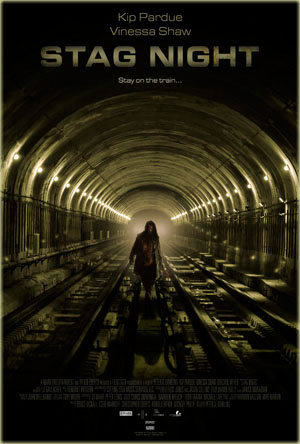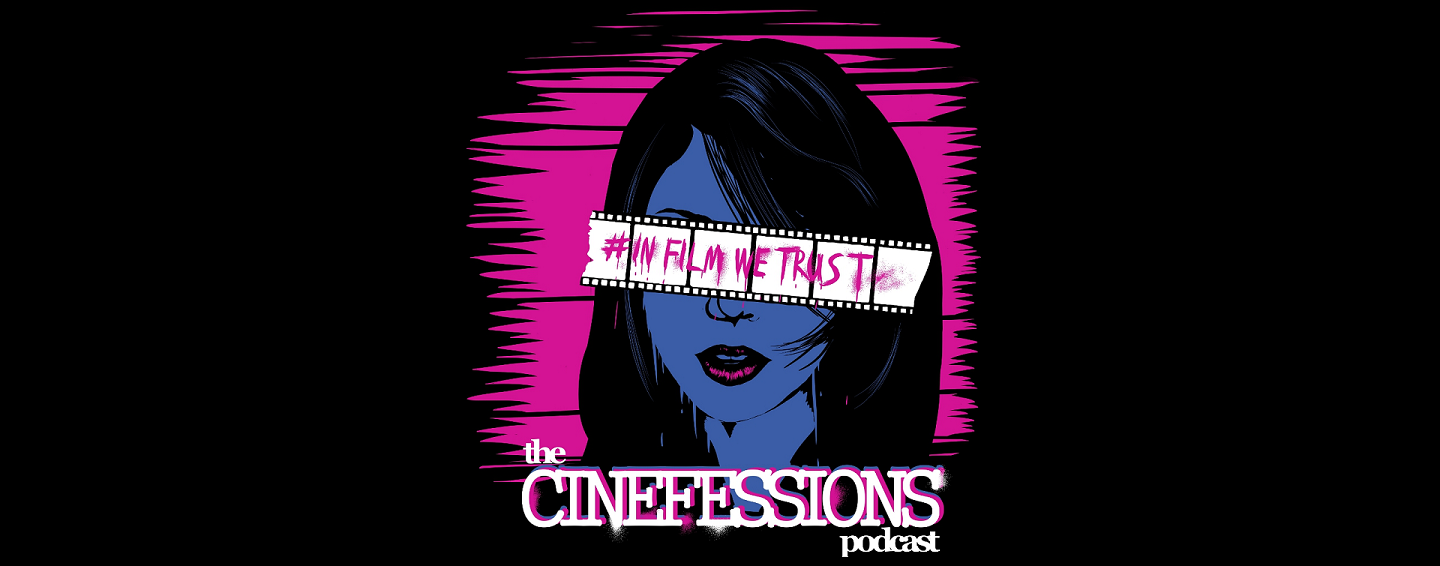 Movie Number– 31
Movie Number– 31
Title– Stag Night (2011)
Running Time– 83 minutes (“R”)
Director– Peter A. Dowling
Writer– Peter A. Dowling
Starring– Kip Pardue, Vinessa Shaw, Breckin Meyer, Karl Geary
—
(Originally an IP Movies Review)
Sam Raimi and Rob Tapert – the duo behind the Evil Dead trilogy, Darkman, and other cult hits – selected two new offerings for their Ghost House Underground label, and Stag Night is the first of those two films (the other being Psych 9, which was released a week after Stag Night). Stag Night is an enthusiastic effort at a character driven horror flick, but is ultimately underwhelming, mostly due to the shallow characters created by writer and director Peter A. Dowling.
Stag Night feels more like Wrong Turn 4: Hillbillies Take Manhattan than an original intellectual property (IP). Four friends out on a stag night get kicked out of a strip club because the fiancé’s – Mike’s (Kip Pardue – Remember the Titans, The Rules of Attraction) – brother, Tony (Breckin Meyer – Road Trip, Freddy’s Dead: The Final Nightmare, Clueless), picks a fight with the bouncer. Anxious to keep the party going, the foursome heads to the subway to get to another bar. Two strippers from the aforementioned club happen to be on the same train: Michelle (Sarah Barrand) and Brita (Vinessa Shaw – The Hills Have Eyes, 3:10 to Yuma). Mike’s buddy Carl (Scott Adkins – The Bourne Ultimatum, Undisputed III: Redemption) and Tony go to flirt with the girls, but Brita wants nothing of it and eventually sprays Tony with pepper spray. The train pauses to let a second train pass and the six passengers pry open a door and end up at an abandoned subway stop as the train pulls away. Nervous, the group decides to walk the tracks to the next station. Once they arrive at the next station, though, they see a transit cop brutally murdered. The murderers spot them, and the group is forced to run for their lives.
The story is interesting, and the setting is relatively unique (instead of the backwoods setting of the Wrong Turn trilogy or The Texas Chainsaw Massacre, we get the dark, underground labyrinth of the New York City subway system). Where Stag Night goes awry is in the execution. Peter A. Dowling tries to make more of Stag Night than he should by placing an emphasis on the characters. He draws the audience’s attention to the characters and their backgrounds, but instead of drawing fully realized, three-dimensional humans, he gives us clichés: the fiancé, the troubled brother, the intelligent stripper who is paying her way through college, the best friend, the sex-crazed jock, the dumb blonde, and the father. Each of these six characters have one thing that is interesting about them, but this one thing is played out within the first thirty minutes of the film, and when the audience is told nothing else about their backstories, they’ll probably stop caring, which kills the final third of the film. If Dowling would have created deeper and more memorable dramatis personae, his character study approach to the horror genre may have been more effective.
Even with a mediocre script, most of the actors deliver believable performances. Kip Pardue has grown up into his male ingénue role nicely since his days of playing Sunshine in Remember the Titans. He leads the cast well, and garners the most sympathy of any of the characters, even though his character makes some stupid decisions (as does every character, thus playing in to the horror movie cliché). Vinessa Shaw, who played the victim in one of the more disturbing rape scenes in modern horror during the 2006 The Hills Have Eyes remake, puts on another strong, if unremarkable, performance in Stag Night. These two have the acting chops to overcome their flat characters, but the audience will forget about them, and the rest of the movie, shortly after it’s over.
To be fair, most viewers don’t walk into a horror movie looking for deep characters and originality, so many of these shortcomings are pardonable. The one thing that is not forgivable, though, is the shaky cinematographic shooting style employed by director Dowling and cinematographer Toby Moore. The camera is constantly shaking back and forth, almost dizzyingly, while the characters are running or fighting the subway killers. Trouble is, this happens for around 75% of the film, meaning the camera seems to never stop moving. This is a terrible choice by the filmmakers, and one that will turn any viewer with a weak stomach off immediately.
Where Stag Night shines is in the work done by special effects makeup artist Elvis Jones. Jones uses a lot of blood effects, but still manages to keep the film out of the Eli Roth “torture porn” genre (like the Hostel series). Aside from an occasional hiccup, the gore effects look realistic and go a long way to add to the tension of the film. Some of the best looking kills benefit from an excellent editing job by Vanick Moradian, and become the most memorable moments in the film.
Stag Night is not a bad film, it just doesn’t stand out as anything more than a mediocre low-budget attempt at the horror genre. Writer and director Peter A. Dowling has high aspirations with Stag Night but stumbles due to a weak script. The end of the film is predictable, but the death scenes are a lot of fun. If this ever shows up on OnDemand or Netflix Instant Queue, I’d say give it a viewing if only for the excellent special effects work by Elvis Jones. Otherwise, Stag Night is easily skipped.
Check Out Stag Night on Amazon
Rent on Netflix

Branden has been a film fan since he was young, roaming the halls of Blockbuster Video, trying to find the grossest, scariest looking VHS covers to rent and watch alone in the basement. It wasn’t until recently, though, that Branden started seeking out the classics of cinema, and began to develop his true passion for the art form. Branden approaches each film with the unique perspective of having studied the art from the inside, having both a bachelor’s and master’s degree in acting. He has been a film critic since 2010, and has previously written for Inside Pulse Movies, We Love Cult, and Diehard Gamefan. His biggest achievement as a film critic, to date, has been founding Cinefessions and turning it from a personal blog to a true film website, housing hundreds of film and television reviews, and dozens of podcasts.

